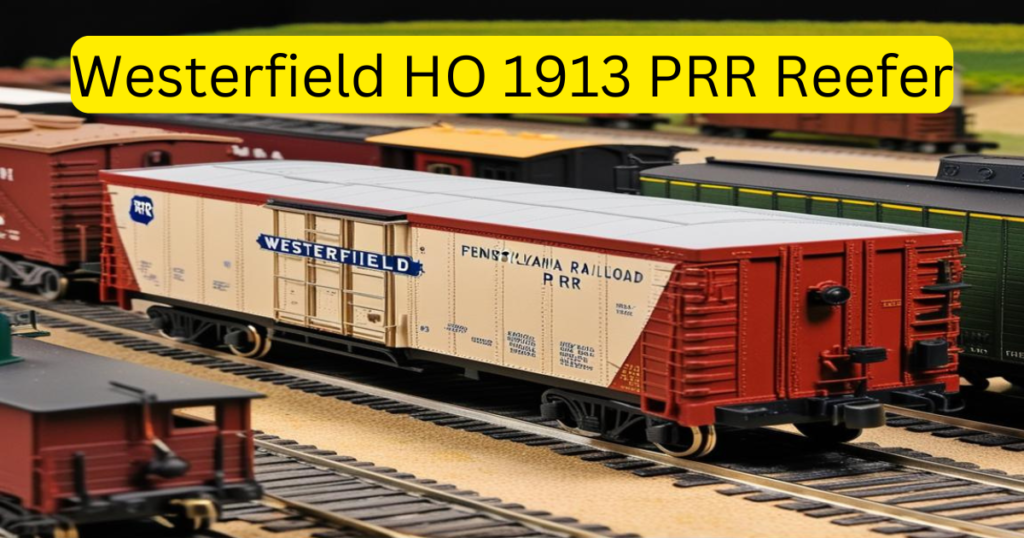Model railroading is a fascinating hobby that transcends mere play; it’s a blend of creativity, history, and craftsmanship. One of the standout pieces in the realm of HO scale models is the Westerfield HO 1913 PRR Reefer. This exquisite model not only represents a specific era in railway history but also serves as a testament to fine detailing and authenticity. In this article, we’ll dive into the features, historical significance, and best practices for incorporating the Westerfield HO 1913 Pennsylvania Railroad (PRR) Reefer into your layout.
A Glimpse into Railway Refrigeration History
Before we delve into the specifics of the Westerfield HO 1913 PRR Reefer, it’s essential to understand the evolution of refrigerated freight cars.
The Birth of Refrigerated Cars
- Early Innovations: The late 19th century saw an increasing demand for transporting perishable goods. The solution? Refrigerated cars, or reefers, designed to keep freight cool during transit.
- 1913 Design: The PRR Reefer model from Westerfield reflects the standard design principles of the early 1900s, blending practical utility with innovative insulation methods.
Did You Know? The introduction of refrigerated cars revolutionized the transport of ice, dairy products, and meats across long distances.
Why Choose the Westerfield HO 1913 PRR Reefer?
As a model railroader, the choice of rolling stock can significantly affect your layout’s authenticity. The Westerfield HO 1913 PRR Reefer stands out for several reasons.
Attention to Detail
Westerfield is renowned for its meticulous attention to detail. Here’s what makes this model exceptional:
- High-Quality Materials: The car is typically made from durable plastic, ensuring longevity and realism.
- Accurate Dimensions: Measuring out to the dimensions found in historical records, the 1913 Reefer maintains scale accuracy.
- Realistic Paint Schemes and Decals: The PRR livery adds a layer of authenticity that can elevate any train scene.
Historical Context
The PRR Reefer is more than just a model; it connects you to the rich history of the Pennsylvania Railroad:
- Major Role in Commerce: The PRR was one of the largest and most influential railroads in the United States during the early 20th century, playing a vital role in transporting agricultural products.
- Technological Milestones: The design of these reefers included wooden and steel construction methods that reflected the engineering advances of the time.
Incorporating the Reefer into Your Layout
Now that we understand the charm and significance of the Westerfield HO 1913 PRR Reefer, let’s discuss how to effectively incorporate it into your model railroad layout.
Choosing the Right Scene
When placing your reefer, consider the following settings to enhance its presence:
- Freight Yards: The busy atmosphere of a freight yard emphasizes your model’s operational purpose.
- Agricultural Sectors: Setting your reefer near farms or agricultural fields can create a narrative around the transport of perishable goods.
- Industrial Areas: Pairing your reefer with factories or warehouses gives context to its journey.
Weathering Techniques
To truly enhance the realism of your model, consider weathering techniques:
- Washing: Use a diluted paint wash to simulate dirt and grime.
- Dry Brushing: Apply lighter colors on raised areas to create a worn effect.
- Chipping: Simulate paint chips on edges for a more authentic look.
Pro Tip: Experiment with different weathering mediums until you achieve a finish that resonates with your vision for the scene.
Additional Tips for Collectors and Modelers
As you explore the world of model railroading, keep these strategies in mind:
- Join a Community: Engage with fellow model enthusiasts through online forums or local clubs.
- Attend Train Shows: Great venues for finding rare models and getting inspiration for your layout.
- Read Resources: Books on model railroading can provide valuable tips on construction and historical accuracy.
Conclusion
The Westerfield HO 1913 PRR Reefer is not just another model; it’s a reflection of a significant era in railway history, offering enthusiasts the opportunity to create a vivid narrative on their layouts. Its detailed design, historical context, and placement tips ensure that it stands out amidst your collection. Whether you’re a seasoned modeler or just starting, this reefer is a charming addition that will enhance the realism of your railroads.
Would you like to learn more about how to improve your model railroad setup? Share your thoughts or experiences with reefer cars in the comments below—we’d love to hear from you!
